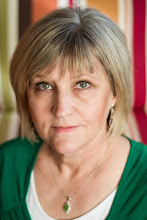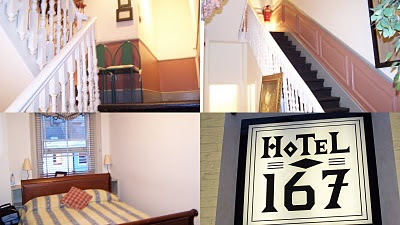The photo below was taken 17 July 1996, while the reconstruction was still taking place. My Russian friends at the pedagogical university told me quite a different story. It is just too good to be left untold.
Even before the original church was built, this was the site of a convent. When the convent was torn down to build the original Catherdral of Christ the Savior, the nuns at the convent said that it would be cursed because the convent was destroyed. True to thier prediction, it seemed the cathedral was cursed because the Soviets demolished it in 1931. The next project, the Palace of the Soviets never really got a good start, and was left a hole for many years. When Krushev finally built the immense pool, it was also cursed. Mysterious drownings took place in the pool. Other swimmers had close calls when they were pulled under the water by unseen forces. Now the cathedral is back, and one can only hope that whatever brought the bad luck is now gone.
Monday, May 31, 2010
Cathedral of Christ the Savior, Moscow, Russia
The original Cathedral took many years to build and was finished in 1860. After the Revolution and the death of Lenin, the site of the cathedral was chosen by the Soviets as the site for a monument to socialism known as the Palace of the Soviets. On 5 December 1931, by order of Stalin's minister Kaganovich, the Cathedral of Christ the Saviour was dynamited and reduced to rubble. It took more than a year to clear the debris from the site. The construction of the Palace of Soviets was interrupted owing to a lack of funds, problems with flooding from the nearby Moskva River, and the outbreak of war. The flooded foundation hole remained on the site until, under Nikita Khrushchev, it was transformed into the world's largest open air swimming pool, it was called the Moskva Pool. In February 1990, the Russian Orthodox Church received permission from the Soviet Government to rebuild the Cathedral of Christ the Saviour. In 1994 the pool was demolished and the cathedral reconstruction commenced. The completed Cathedral of Christ the Saviour was consecrated on the Transfiguration day, 19 August 2000. There is now a footbridge across the river that was constructed between 21 June 2003 and 3 September 2004. This church served as the venue when the last Russian Tsar, and his family were glorified as saints in 2000. The first Russian President Boris Yeltsin, who died of heart failure on 23 April 2007, lay in state in the cathedral prior to his burial in Novodevichy Cemetery.
Sunday, May 30, 2010
Tretyakov Gallery, Moscow, Russia
This is the foremost depository of Russian fine art in the world. The gallery's history started in 1856 when the Moscow merchant Pavel Mikhailovich Tretyakov acquired works by Russian artists of his day with the aim of creating a collection, which might later grow into a museum of national art. In 1892, Tretyakov presented his already famous collection to the Russian nation.The façade of the gallery building was designed by the painter Viktor Vasnetsov in a peculiar Russian fairy-tale style. It was built in 1902–04 to the south from the Moscow Kremlin. During the 20th century, the gallery expanded to several neighboring buildings, including the 17th-century church of St. Nicholas in Tolmachi. The collection contains more than 130,000 exhibits.
Saturday, May 29, 2010
Friday, May 28, 2010
Scottish Parliament, Edinburgh
This multipurpose complex houses committee rooms, debating chambers and administration offices. The unique design is meant to reflect the Scottish landscape, its people and its culture; especially the bay windows which are made of stainless steel and framed in oak, with oak lattices covering the glass. The structure has won many awards including the 2005 Stirling Prize.
Thursday, May 27, 2010
So, where should we eat?
When we were in the UK, the exchange rate wasn't the best. It made it expensive to really eat a full meal in a restaurant. Our solution was the bakeries. This one in Edinburgh was my personal favorite. I really liked the macaroni and cheese pie. Ask me about it- seriously, it was great!
Wednesday, May 26, 2010
Greyfriars Bobby, Edinburgh, Scotland
In the early 1800's a man called John Gray, a gardener, arrived in Edinburgh with his wife and son looking for work. The weather was cold, however, and the ground was hard, so there were no gardening jobs available. He took what work he could find, and became a member of the Edinburgh Police Force - a Constable.
As a condition of his job, John Gray was required to have a dog. He bought a Skye Terrier and named him Bobby (Bobby was the nickname for Constables in the Police Force). Bobby became a beloved and loyal companion.
Unfortunately, after a few years as a policeman, John Gray became ill with tuberculosis, and died in February 1858. He was buried in old Greyfriars Kirkyard (Churchyard) in an unremarkable grave with no gravestone.
For the next fourteen years, Bobby sat and kept guard over his master's grave. He left the grave only for food, waiting patiently until the one o'clock gun was sounded, when he visited the cafe at 5/6 Greyfriar's Place which he used to frequent with his master. There the owners (who changed over the years) would feed him his dinner. The last owner to feed Bobby, John Traill, had a special dish made for him (engraved "Bobby's Dinner Dish"), which can be seen in the Museum of Edinburgh.
The gardener and keeper of Greyfriars, James Brown, tried often to remove Bobby from the Kirkyard, but finally gave up and provided a shelter instead, by placing sacking beneath two tablestones at the side of John Gray’s grave.
Bobby’s fame spread throughout Edinburgh. On a daily basis the crowds would gather at the entrance of the Kirkyard waiting for the one o'clock gun and a glimpse of Bobby leaving for his meal.
In 1867 a bye-law was passed that required dogs to be licensed or destroyed. Sir William Chambers (The Lord Provost of Edinburgh) paid Bobby's licence himself, and presented him with a collar with the brass inscription "Greyfriars Bobby from the Lord Provost 1867 licensed". This can also be seen at the Museum of Edinburgh.
The people of Edinburgh looked after the faithful Bobby while he watched over his master. Bobby died in 1872.
Tuesday, May 25, 2010
Edinburgh Castle
Edinburgh Castle is a castle fortress which dominates the sky-line of the city of Edinburgh, Scotland, from its position atop the volcanic Castle Rock. Human habitation of the site is dated back as far as the 9th century BC, although the nature of early settlement is unclear. There has been a royal castle here since at least the reign of David I in the 12th century, and the site continued to be a royal residence until the Union of the Crowns in 1603. As one of the most important fortresses in the Kingdom of Scotland, Edinburgh Castle has been involved in many historical conflicts, from the Wars of Scottish Independence in the 14th century, up to the Jacobite Rising of 1745, and has been besieged, both successfully and unsuccessfully, on several occasions. From the later 17th century, the castle became a military base, with a large garrison. Its importance as a historic monument was recognised from the 19th century, and various restoration programmes have been carried out since.
Few of the present buildings pre-date the Lang Siege of the 16th century, when the medieval fortifications were largely destroyed by artillery bombardment. The notable exception is St Margaret's Chapel, the oldest surviving building in Edinburgh, which dates from the early 12th century.[1] Among other significant buildings of the castle are the Royal Palace, and the early-16th-century Great Hall. The castle also houses the Scottish National War Memorial, and National War Museum of Scotland.
Monday, May 24, 2010
Edinburgh, Scotland
Shop the Royal Mile as you head down from the castle. You can find lots of beautiful wools and all sorts of touristy items. I've read stories that the the Royal Mile is haunted as well. What more can you ask for than ambiance, haunts, and great shopping?
Sunday, May 23, 2010
Saturday, May 22, 2010
Wednesday, May 19, 2010
Tuesday, May 18, 2010
Scarborough, England
Scarborough is a town on the North Sea coast of North Yorkshire, England. The older part of the town lies around the harbour and is protected by a rocky headland. The most striking feature of the town's geography is a high rocky promontory pointing eastward into the North Sea. The promontory supports the 11th century ruins of Scarborough Castle and separates the sea front into a North Bay and a South Bay. The South Bay was the site of the original early medieval settlement and the harbour, which form the current Old Town district. This remains the main focus for tourism, with a sandy beach, cafes, amusements, arcades, theatres, and entertainment facilities.
Subscribe to:
Posts (Atom)





































